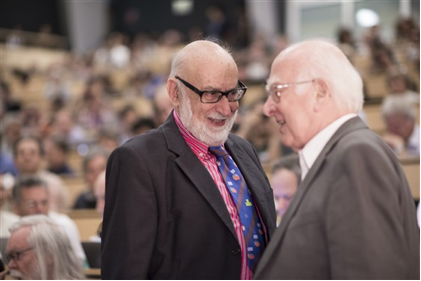fundamental? The modern atom model The scale of the atom What are we looking for? The standard model The standard model quiz
The Theory of 1964
In 1964, six theoretical physicists hypothesized a new field (like an electromagnetic field) that would permeate all of space and solve a critical problem for our understanding of the universe.
Independently, other physicists were constructing a theory of the fundamental particles, eventually called the "Standard Model," that would prove to be phenomenally accurate.*
These otherwise unrelated efforts turned out to be intimately interconnected. The Standard Model needed a mechanism to give fundamental particles mass.
The field theory devised by Peter Higgs, Robert Brout, François Englert, Gerald Guralnik, Carl Hagen, and Thomas Kibble did just that.

Photo of Francois Englert and Peter Higgs - © CERN
* Experimental tests of the accuracy of some parts of the Standard Model have shown it to be accurate to one part in 10 billion. That's equivalent to predicting the distance between New York and San Francisco within an accuracy of less than 0.02 inches (0.4 mm).





















